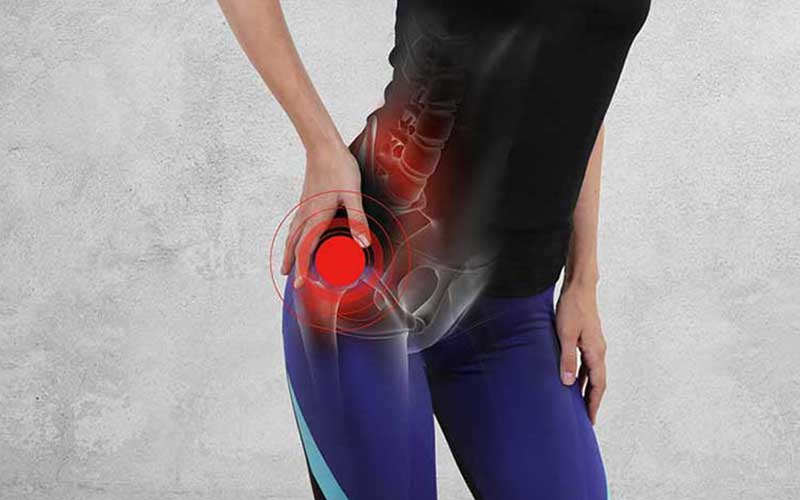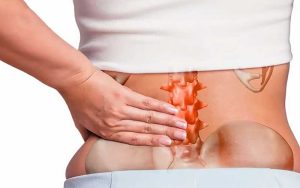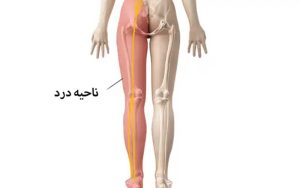Is your pelvic pain related to a lumber disc?

Is your pelvic pain related to a lumber disc?
What is pelvic pain and why does it occur?
-
Joint problems: Arthritis or hip arthritis.
-
Muscle problems: Strain or spasm of the muscles around the pelvis.
-
Nerve problems: such as pressure on the sciatic nerve.
-
Spinal problems: including a herniated disc or spinal stenosis.
One of the lesser-known but important causes of hip pain is lumbar disc problems, which we will discuss in detail below.
What is a herniated disc and how does it cause pelvic pain?
Lumbar discs are jelly-like cushions that sit between the vertebrae of the spine and act as shock absorbers. When a lumbar disc becomes damaged or herniated, the material inside the disc can leak out and put pressure on surrounding nerves. This pressure can cause pain that radiates to other areas, including the pelvis. Lumbar disc pain is usually caused by pressure on the sciatic nerve or other nerves in the lower back. This pain may be felt as:
-
Pain that radiates from the back to the pelvis, buttocks, or even the thigh and leg.
-
Burning or numbness in the pelvic area.
-
Pain that worsens when sitting for long periods of time or bending over

Warning signs you shouldn’t ignore
-
Radiating pain: Pain that spreads from the back to the hips or legs.
-
Numbness or tingling: A tingling sensation in the pelvis or legs.
-
Muscle weakness: Difficulty walking or lifting objects.
-
Pain when moving: Pain worsens when bending, lifting objects, or turning.
If you experience these symptoms, it is essential to see an orthopedic specialist or neurosurgeon. Spanta Specialized Center, with its experienced team, including Dr. Mojtaba Mostafazadeh, is one of the best options for diagnosing and treating these problems.
How to diagnose if pelvic pain is related to a herniated disc?
-
Physical examination: Checking range of motion, muscle strength, and neurological symptoms.
-
Imaging:
-
MRI: The best way to view the discs and nerves of the spine.
-
CT scan: To examine bone structure.
-
Radiograph (X-ray): To rule out joint problems or fractures.
-
-
Neurological tests: Such as electromyography (EMG) to check nerve function.
5 Advanced Non-Surgical Methods for Treating Lumbar Discs in 2025
Methods of treating pelvic pain caused by lumbar disc herniation
Treatment for lumbar disc-related pelvic pain depends on the severity of the problem and the patient’s condition. Fortunately, many cases can be treated with nonsurgical methods. Here are some treatment options:
1. Non-surgical treatments
-
Physical therapy: Strengthening and stretching exercises to improve flexibility and reduce pressure on the disc.
-
Drug therapy: Use of nonsteroidal anti-inflammatory drugs (NSAIDs), muscle relaxants, or corticosteroids.
-
Epidural injection: Injecting cortisone into the space around the spinal cord to reduce inflammation and pain.
-
Lifestyle changes: Lose weight, improve posture, and avoid strenuous activities.
By providing advanced physiotherapy services and personalized treatment programs, the Spanta Center helps patients recover without the need for surgery.
2. Surgical treatments
-
Microdiscectomy: Removal of the damaged portion of the disc to relieve pressure on the nerve.
-
Laminectomy: Removal of part of a vertebra to relieve spinal canal stenosis.
-
Artificial disc replacement: In more advanced cases.

How to prevent pelvic pain and lumbar disc problems?
-
Regular exercise: Exercises that strengthen the back and abdominal muscles.
-
Correct posture: Keep your back straight when sitting, standing, or lifting objects.
-
Healthy weight: Excess weight puts more pressure on the spine and pelvis.
-
Avoid sitting for long periods of time: Get up and move around every 30 minutes.
Why the Spanta Center and Dr. Mojtaba Mostafazadeh?
Spanta Specialized Center is one of the most reputable treatment centers in the field of spine and orthopedic problems. The center offers comprehensive services from diagnosis to treatment, utilizing advanced equipment and a team of experts. Dr. Mojtaba Mostafazadeh, with years of experience in treating lumbar disc problems and related pain, helps patients regain their quality of life.
Final words
